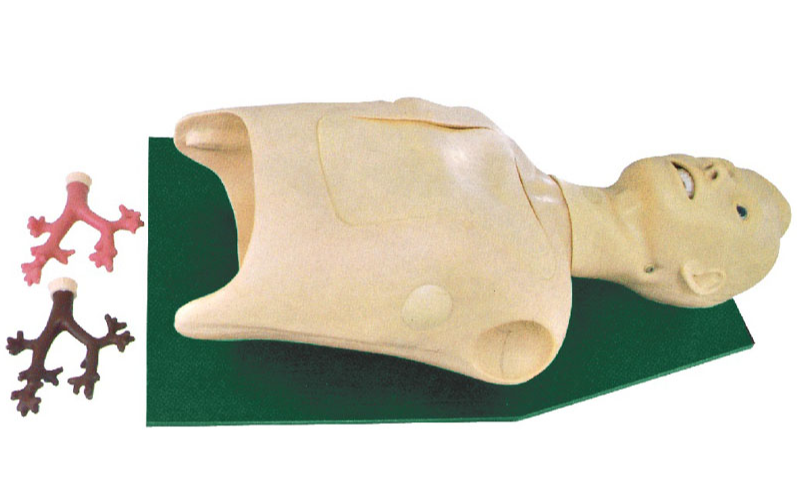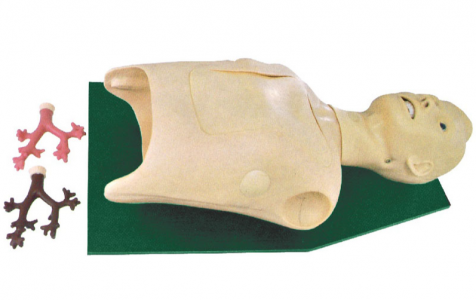Bronchoscopy training model plays a key role in medical education and clinical training, it can simulate the treatment process of a variety of broncho-related diseases. The following is a detailed explanation of the diagnosis and treatment process mainly simulated by the bronchoscope training model:

Unexplained cough:
When patients have symptoms such as prolonged cough and coughing up blood, and the effect is not obvious after traditional treatment, doctors usually consider using a bronchoscope to determine the cause. The bronchoscopy training model can simulate this situation, and the trainer can learn how to correctly operate the endoscope through the model to observe the lesions in the airway, such as inflammation, tumors, etc., so as to make accurate diagnosis.
Lung diseases:
Lung diseases such as tuberculosis, pulmonary fibrosis and emphysema are also the main applications of bronchoscopy. The bronchoscopy training model can simulate the manifestations of these diseases in the airway, such as mucosal congestion and edema caused by inflammation, ulcers and granulomas of tuberculosis focal points. Through the model, trainers can learn how to identify these lesions and, in combination with other examinations such as lung CT, develop appropriate treatment plans.
Bronchial rupture:
When a patient has suffered a bronchial rupture due to an external impact on the chest or for other reasons, a bronchoscope can be used to determine the location and extent of the rupture. The bronchoscope training model can simulate this emergency situation, and the trainer can simulate hemostasis, repair and other operations on the model to learn how to deal with the patient quickly and effectively in an emergency.
Other symptoms:
In addition to the above conditions, the bronchoscopy training model can also simulate the diagnosis and treatment process of other broncho-related conditions, such as bronchial foreign body and bronchial stenosis. The diagnosis and treatment of these diseases requires doctors to have rich clinical experience and exquisite operational skills. Through the simulation training of training models, trainers can better master these skills.
In summary, the bronchoscopy training model provides a valuable resource for medical education and clinical training by simulating the treatment and treatment of a variety of broncho-related conditions. It can help trainers improve their operational skills, enrich their clinical experience, and provide better medical services for patients.

